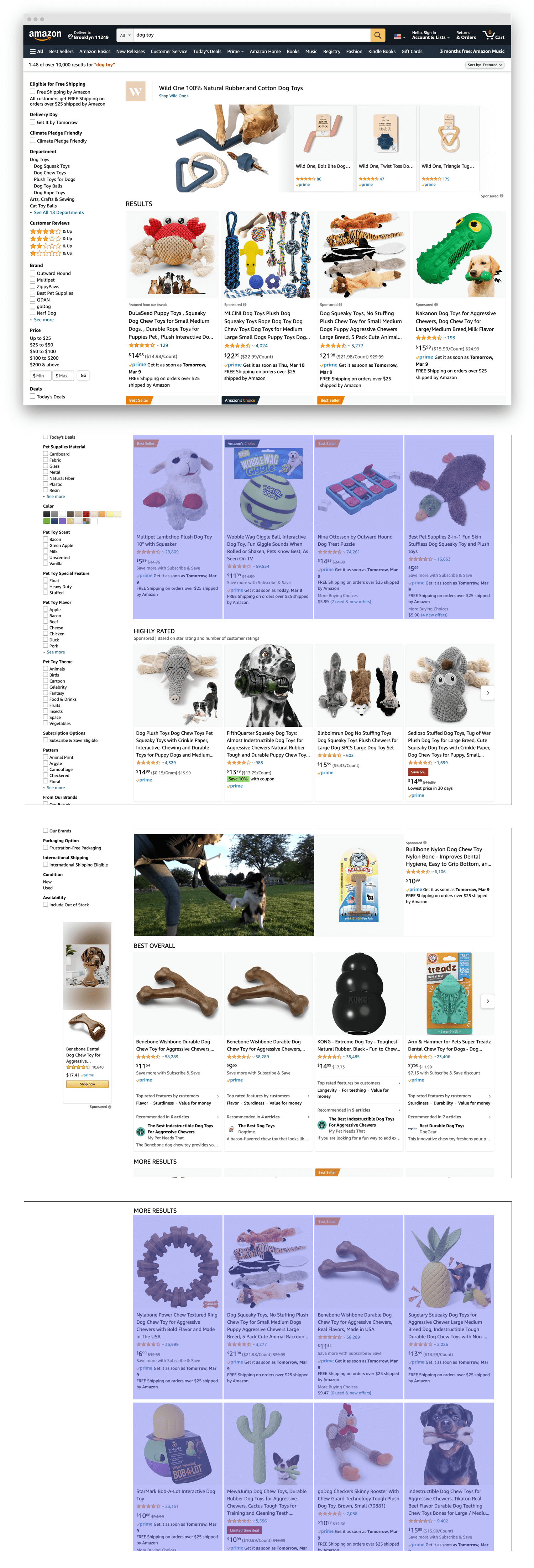Of the first twenty products a shopper sees when searching on Amazon, only four are organic results. There is little space left for organic results at the top of the page, the real estate that drives most sales. Few purchases happen beyond the first page of search results. And not many shoppers scroll to the bottom of even the first page.
Amazon search results often start with a sponsored brand advertisement displaying a few products, followed by four sponsored products and four organic results. Then, four more sponsored products (marked as “Highly rated. Based on star rating and number of customer ratings”), and finally a sponsored video ad displaying one product. Editorial recommendations from articles, Amazon’s Choice picks, and other offers come next.
It takes scrolling past three browser windows worth of search results to get to the fifth organic result. It takes even more swipes to see the fifth organic result on mobile. Thus, there is a meaningful difference between the first four organic results and the rest - the first group is significantly more likely to be clicked on.
Because of the proliferation of search results that are not organic, shoppers are disproportionally more likely to be purchasing a sponsored product. For brands, that means the difference between having a #2 search result versus a #5 could be substantial. And the difference between paying for sponsored listings versus relying on organic placement could be having sales versus none at all.

Amazon has been on a path turning more of its real estate into advertising and pushing down organic search results for years. First, by increasing the number of ads, the number of ads at the top, and the number of ad types. Second, by introducing editorial content and various recommendation widgets inserted among search results. All of this was already in place as early as 2018-2019.
These changes created the $31 billion advertising business. Which inspired other retailers to follow suit and build their advertising businesses. eBay, Walmart, Etsy, and others are starting to introduce more sponsored placements in search results. The practice is the new form of slotting fees (also known as placement fees) seen in retail for decades. Although all marketplaces already charge a transaction fee, a slotting fee of sorts.
A decade ago, Amazon search results were largely deterministic and meritocratic. Products that sold well and shoppers liked ranked higher than the rest. Today, that’s only part of the variables at play. More impactful is paying for sponsored placements and figuring out how to be featured by Amazon’s Choice or editorial recommendations.
Amazon morphed from building algorithms for figuring out the best search results and recommendations to something very different. It no longer makes recommendations, and best search results are secondary to advertising that took over.

